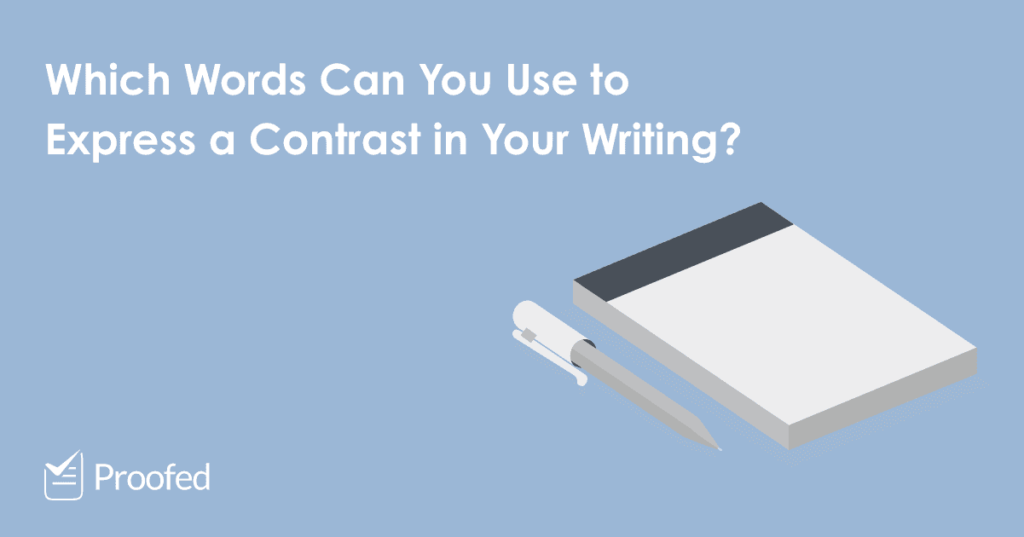Persuasive writing depends on presenting a coherent argument. And to do this, you need to show the connections between the ideas you discuss, especially when looking at contrasting facts or points of view. In this blog post, then, we’re going to explore some useful contrast words and phrases.
Coordinating Conjunctions: But and Yet
“But” and “yet” both imply a contrast. And since these words are coordinating conjunctions, we can use them to link either full clauses or parts of a clause.
In the first case, the conjunction shows a contrast between each clause:
The boat was sinking, yet the band played on.
Here, for instance, we’re contrasting the situation (i.e., a sinking ship) with the way the actions of the band go against our expectations (i.e., they played on rather than trying to find a lifeboat and save themselves).
In the second case, we use the conjunction to indicate a contrast between two words or phrases within a clause. For instance:
He was happy but nervous about his new job.
Here, the “but” implies a contrast between feeling happy and being nervous.
Subordinating Conjunctions: Though, While, Whereas
We use subordinating conjunctions of contrast to link a subordinate clause to a main clause when they conflict with or contradict one another.
Two of the most common examples of this are “though” and “although,” which are interchangeable in most cases. For example:
Though I hate flying, I love traveling.
I love traveling, although I hate flying.
As you can see, we can use a subordinate conjunction either at the start of a sentence, with the subordinate clause before the main clause, or in the middle of a sentence, with the subordinate clause after the main clause. In both cases, though, the conjunction shows us that the two clauses contrast.
For more emphasis on the contrast, you can also use “even though”:
Even though I hate flying, I love traveling.
Alternatively, you can use “while” and “whereas” to present contrasting facts or situations. As with the words above, you can use these terms either at the start or in the middle of a sentence:
Find this useful?
Subscribe to our newsletter and get writing tips from our editors straight to your inbox.
While I am short, I can jump very high.
I have long hair, whereas you are bald.
Conjunctive Adverbs
We can also use conjunctive adverbs to connect clauses or sentences. And there are several adverbs and adverbial phrases that imply a contrast, including “however,” “nonetheless,” “nevertheless,” “despite,” and “in spite of.”
These work by telling the reader that a sentence or clause will contrast with the preceding statement. Usually, we also set adverbials apart with commas:
School attendance increased. Despite this, results did not improve.
She suffered many setbacks. She did, however, succeed in the end.
He was exhausted after days on the road; nevertheless, he kept walking.
As shown above, adverbials like these can either link two sentences or show the relationship between two clauses connected with a semicolon. Exercise caution when using them, though. Despite their similarities, conjunctive adverbs do bear subtle differences. Alternately is not a good alternative for alternatively!
One the One Hand… On the Other Hand
This phrase lets you contrast two opposing ideas or situations:
On the one hand, I love traveling. On the other hand, I miss my family.
In less formal writing, it’s also common to use “on the other hand” by itself:
I should save my money; on the other hand, I do want a new TV.
In formal writing, though, you should use both parts of the phrase together.
Expert Proofreading
In this post, we’ve discussed some key linking words and phrases that you can use to show a contrast in your writing. But if you’d like more advice on your vocabulary, as well as an expert eye to help you eliminate errors from your work, give our proofreading services a go today.



